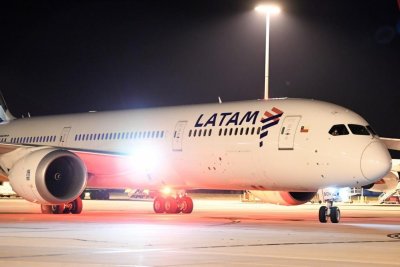**Latin American Airlines Warn High Airport Taxes and Connection Fees Threaten Growth Amid Record Connectivity**
*Oct. 29 (UPI)* – Latin American airlines are raising concerns over new connection fees and high airport taxes that are driving up airfares and may divert passenger traffic to other hubs, just as the region reaches its highest level of air connectivity.
At a recent meeting in Lima, leaders of the Latin American and Caribbean Air Transport Association highlighted that the aviation industry generated $240 billion in 2024—equivalent to 3.6% of the region’s gross domestic product—and supports 8.3 million jobs. However, they warned that “excessive” tax burdens pose a significant threat to the sector’s growth.
Peter Cerdá, Executive Director of the Air Transport Association, explained that while airlines are profitable, they operate on very thin margins. “We earn just $3.40 per passenger carried,” he said. Cerdá added that Latin America remains the most expensive region globally for fees and taxes, impacting both domestic and international flights.
According to the International Air Transport Association, taxes and charges constitute about 15% of the average ticket price in North America, but in Latin America, some estimates place that figure as high as 40%, depending on the country.
One example is Lima’s new Jorge Chávez International Airport, which plans to introduce a new fee for connecting international passengers. The Air Transport Association warned this could reduce demand by 3% to 11%. Due to objections from the tourism sector, the implementation of this fee has been postponed until December.
Airport fees in the region are determined by government authorities or private concessionaires operating airports under state contracts. While these fees are included in ticket prices and meant to fund terminal maintenance, security, and airport services, airlines argue that in many cases the collected money is not reinvested into infrastructure.
Airline officials liken these surcharges to “hub taxes” and caution that countries like Panama—whose economies heavily rely on connectivity—could lose competitiveness if they impose fees on passengers merely transiting through their airports.
Industry executives also emphasize that flying in South America “is not a tourist luxury” but often the only practical way to connect regions separated by jungles or mountain ranges. For instance, Chileans take more than one flight per year on average, nearly double the regional average.
Looking ahead, the airline association estimates that by 2033, the economic impact of the industry could reach $500 billion and create 15 million jobs—if governments adopt consistent and predictable policies that support sustainable growth.
https://www.upi.com/Top_News/World-News/2025/10/29/peru-airline-connection-fees-airfares-rise/2331761764851/


